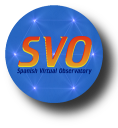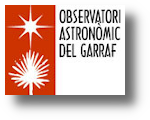 |  |  |
Grant PID2020-112494GBI00 funded by
|
The discovery of a new binary star is one of the most pleasures that can be experimented by the people passionate with the study of the celestial bodies. Since the beginning of the history of the observation of the double stars, many had given their life, or even their fortune, to perform astronomical prospection to this end. Until the last decades of the XX century it was a personal and lonely work, where each astronomer used his own protocol of work according to the telescope and technology available. The aim, addressed mostly to the search for stars of great astrophysical interest, ended usually in closed pairs with difficult access, except for the professional astronomical observatories. Currently the systematic search of new pairs continues, generally in the hands of teams composed by several people or on programs carried out for space missions. The results, contained in different catalogues, can be crossed with the data obtained in other similar files to the different types of binaries. Thanks to the efforts made by several institutions, nowadays, the astronomical community disposes this information freely and through on-line tools in digital format.
The visual separated double stars are easy to be observed through middle range optical instruments; the difficulty comes on confirm its gravitational relation knowing only the variation of their relative positions. Indeed, usually those movements have an exasperating slowness, tracing short walk arcs and having orbital periods that tend to overtake the human middle lifetime limits. The observers know that, but, who can resist to not taking part in the experience of finding a new stars pair?
New opportunities exist to do so, like the search of stellar systems with common proper motion (CPM): Stars that share their annual displacement over the canopy of heaven, in magnitude and direction, reflecting the rotational movement of our Galaxy. Precisely this has been the way chosen by the team which has performed the investigation presented here. A set of astronomers that know very well what means to stay many nights behind the eyepiece or a camera and many days of office work to guarantee that their products have the adequate precision. But that has had the audacity to immerse in a new adventure: to adapt the modus operandi from the pioneers of the second half of past century dedicated to the survey of those systems, to analyze photographic plates of different celestial cartographies, using the resources offered by the communication technologies.
The result product of a group of 30 people, coordinated by the authors of the publication who constitute the alma mater of the Observatori Astronòmic del Garraf (OAG), breaks collaborative moulds between the professional and amateur astronomy about this issue. The relationship between both parts has crossed international frontiers. A fluid knowledge transfer has allowed designing a conscientious methodology and working plan, as is described in the article, where the actions, chronology and roles of the protagonists are defined with crystalline clarity. The conveniences currently available to astronomers to use digitalized databases have been exploited in an optimal manner. The program codes specifically made to make more effective use of virtual platforms and the publication of tutorials which simplify the formulas of performance, have made affordable the participation in the project to many lovers of double stars.
The results obtained in this catalogue talk by themselves; disclosing the patience, the perseverance and the suitable strategy of team work, under a delicate work of coordination, which are the keys to achieve the success. Success that turn into 3,382 discoveries during a period of 8 years; during which had been analyzed the huge quantity of 460,800 plates corresponding to the equatorial belt of the celestial sphere. We face an important quantitative work, developed in the first decades of the XXI century; what means a singular increment of almost 44% in the number of objects located mostly in the solar surroundings. But we have to point out also its qualitative work which nourish both from complementary astrometrical measures and the gathering of useful information for every object. The statistical assessment of the systems picked up, whose angular separations go from approximately 1 second to 16 minutes of arc, with proper motions that are in a pitchfork between 50 to 200 mas/yr, with magnitudes that can achieve almost the 20th and differences of magnitude of to 13 mainly in the V and R bands, form the critical mass to lay out subsequent reflections.
This survey is a paradigm that opens the door to all who want to feel the emotion of unveiling new binary stars; because there is a lot of work to be done. Indeed, although our authors have already new projects, like the second OAG program planned for stars with declinations greater than 80º N, no doubt the surprises that will provide the huge amount of data of the GAIA mission from the European Space Agency, will guarantee the continuity of surveys of this caliber to find the thousands of system to be detected yet. A venture that even, why not?, could derive in a future project of citizen collaboration.
Josefina F. Ling
Santiago de Compostela, January, 2017
El descubrimiento de una nueva estrella binaria es uno de los mayores placeres que pueden experimentar las personas apasionadas por el estudio estos cuerpos celestes. Desde el comienzo de la historia de la observación de las estrellas dobles, muchas han sido las que han dedicado su vida, e incluso su fortuna, a realizar prospecciones astronómicas con tal fin. Hasta casi las últimas décadas del siglo XX se trataba, en general, de una labor personal y solitaria, donde cada astrónomo utilizaba su propio protocolo de trabajo ajustado a los telescopios y a las tecnologías disponibles. El objetivo, dirigido en su mayoría hacia la búsqueda estrellas de gran interés astrofísico, desembocaba normalmente en pares cerrados de difícil acceso excepto en el caso de los observatorios astronómicos profesionales. En la actualidad la búsqueda sistemática de nuevos pares continúa regularmente en manos de equipos constituidos por varias personas o sobre programas llevados a cabo por misiones espaciales. Los resultados, recogidos en diferentes catálogos, pueden cruzarse con los datos contenidos en otros archivos afines a los distintos tipos de binarias. Gracias al esfuerzo realizado por diversas instituciones, la comunidad astronómica dispone hoy en día, de forma libre y a través de herramientas on-line, de esta información en formato digital.
Las estrellas dobles visuales separadas son fáciles de observar a través de instrumentos ópticos de gama media, la dificultad estriba en confirmar su relación gravitatoria vigilando tan sólo la variación de sus posiciones relativas. En efecto, lo habitual es que estos movimientos sean de una exasperante lentitud, trazando arcos de corto recorrido y dando lugar a períodos orbitales que suelen sobrepasar de largo los límites de la vida media del ser humano. Las y los observadores son conscientes de ello, pero ¿quién se resigna a no participar en la experiencia de encontrar una nueva pareja de estrellas?
Para ello existen también otras oportunidades, como puede ser la búsqueda de sistemas estelares con Movimiento Propio Común (MPC). Estrellas que comparten su desplazamiento anual sobre la bóveda del cielo, en magnitud y sentido, reflejando el movimiento de rotación de nuestra Galaxia. Precisamente este ha sido el camino elegido por el equipo que ha realizado la investigación que aquí se presenta. Un conjunto de astrónomos y astrónomas que sabe bien lo que significa pasar muchas noches detrás de un ocular o de una cámara y muchos días de trabajo de gabinete, para garantizar que sus productos posean la precisión adecuada, pero que ha tenido la audacia de sumergirse en una nueva aventura: la de adaptar el modus operandi de los pioneros de la segunda mitad del siglo pasado dedicados a la prospección de estos sistemas, para analizar placas fotográficas de diferentes cartografiados celestes, aprovechando los recursos que ofrecen las nuevas tecnologías de la comunicación.
La obra fruto de un grupo de casi 30 personas, coordinadas por los autores de la publicación quienes constituyen el actual alma mater del Observatorio Astronómico del Garraf (OAG), rompe moldes colaborativos entre la astronomía profesional y la amateur en lo que a este tema se refiere. La relación establecida entre ambas partes ha traspasado fronteras internacionales. Una fluida transferencia de conocimientos ha permitido diseñar una metodología y un plan de trabajo esmerados, tal y como se describe en este artículo, donde las acciones, la cronología y los roles de los protagonistas están definidos con claridad meridiana. Las facilidades de las que actualmente disponen los astrónomos y astrónomas para el uso de bases de datos digitalizadas han sido explotadas de forma óptima. Los códigos de programación específicamente elaborados para hacer más eficaz el uso de plataformas virtuales y la publicación de tutoriales, que simplifican las fórmulas de actuación, han hecho asequible la participación en el proyecto de muchos enamorados y enamoradas de las estrellas dobles.
Los resultados recogidos en este catálogo hablan por sí solos, revelando la paciencia, el tesón y la adecuada estrategia de trabajo en equipo, bajo una delicada tarea de coordinación, que han sido claves para conseguir el éxito. Éxito que se traduce en 3.382 descubrimientos, efectuados en un periodo de casi 8 años, durante el cual se ha analizado la ingente cantidad de 460.800 pantallas correspondientes al cinturón ecuatorial de la esfera celeste. Estamos ante un importante trabajo cuantitativo, desarrollado en las primeras décadas del siglo XXI, que supone un singular incremento, de casi el 44%, en el número de estos objetos situados mayoritariamente en el entorno solar. Pero también hay que señalar su carácter cualitativo, que se nutre tanto de medidas astrométricas complementarias, como de la recopilación de información de utilidad para cada objeto. Las valoraciones estadísticas de los sistemas recogidos, cuyas separaciones angulares van desde aproximadamente 1 segundo a 16 minutos de arco, con movimientos propios que se encuentran en una horquilla de entre 50 y 200 mas/año, con magnitudes que pueden alcanzar casi la 20ª y diferencias de magnitud de hasta 13 principalmente en las banda V y R; forman la masa crítica para plantear reflexiones posteriores.
Este sondeo es un paradigma que deja la puerta abierta a todas aquellas personas que quieran sentir la emoción de desenmascarar nuevas estrellas binarias; pues es mucho el trabajo que todavía queda por realizar. Efectivamente, aunque nuestros autores ya tienen en marcha nuevos proyectos, como un segundo programa del OAG planificado para estrellas con declinaciones superiores a 80º N, es indudable que las sorpresas que nos depare el inmenso volumen de datos de la misión GAIA, de la Agencia Espacial Europea, asegurará la continuidad de prospecciones de este calibre para encontrar los miles de sistemas que todavía quedan por detectar. Una empresa que incluso ¿y por qué no? podría derivar en un futuro proyecto de ciencia ciudadana.
Josefina F. Ling
Santiago de Compostela, enero de 2017
| JAl2012a | Alonso, J. |
| OAG2012l | Alonso, L. |
| OAG2012e | Arredondo, E. |
| ABL | Bernal, A. |
| MBL | Bernal, M. |
| OAG2012a | Castella, D. |
| OAG2012f | Correa, M. |
| OAG2012h | Esteban, F. |
| OAG2012b | Fabregas, C. |
| OAG2012j | Franc, N. |
| OAG2012k | Galera, T. |
| SCH | Schnabel, C. |
| OAG2012c | Miret, N. |
| XMI | Miret, X. |
| NVL | Novalbos, I. |
| OAG2012m | Oliva, A. |
| Rib2012a | Ribe, L.I. |
| OAG2012g | Rojo, J. |
| OAG2012d | Tamayo, A.M. |
| TOB | Tobal,T. |
| OAG2012i | Valero, J. |